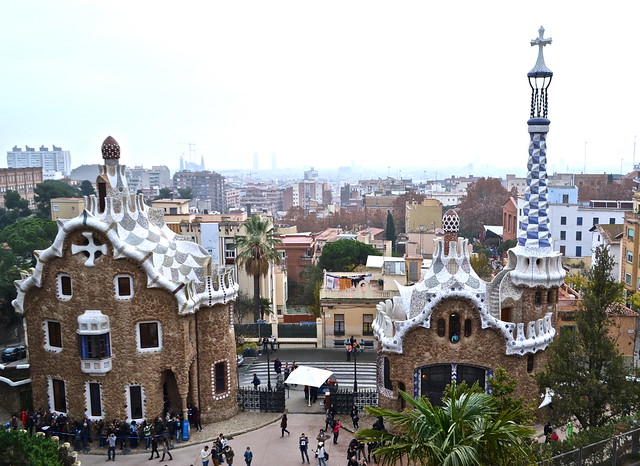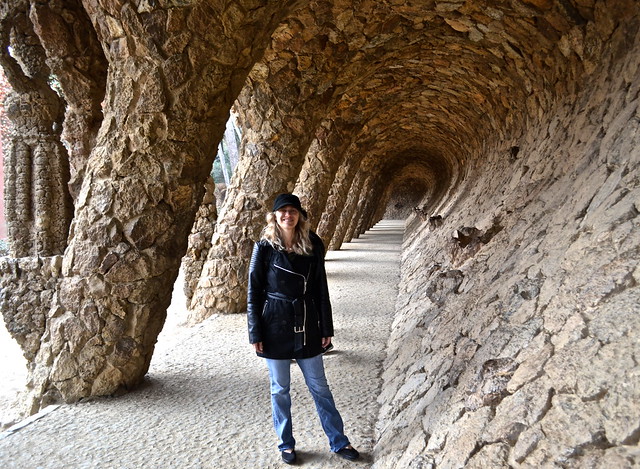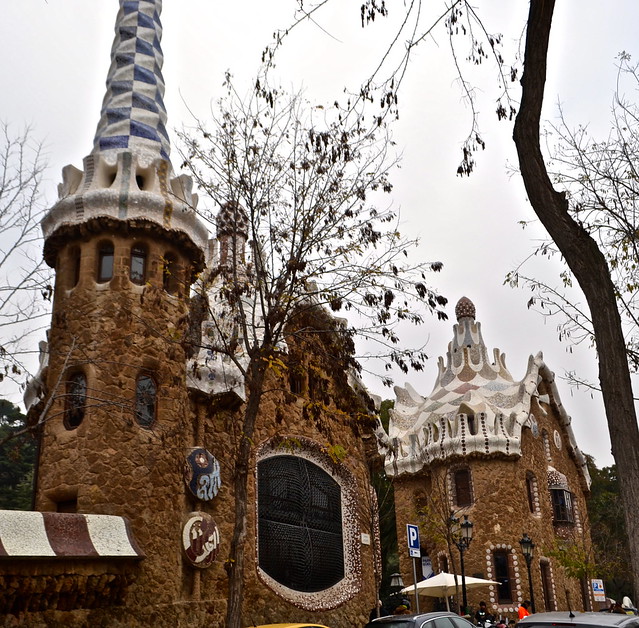
If you don’t know what to do in Barcelona, you can easily stick to the Antoni Gaudí route, and chances are you will not only visit all of his masterpieces that have become more than iconic but even the face of Barcelona itself. I’m going to tell you the history and facts of Parc Güell or Parque Gaudi.
Although there are tons of Antoni Gaudí places to visit in Barcelona, if you visit these three, you are sure to have a good idea of what this brilliant artist and architect did. Don’t miss Sagrada Familia which is an iconic cathedral or church and Casa Batllo.
Park Guell Facts and History
Before arriving here, it is a REALLY GOOD IDEA to have your reservations set up. The park, especially during the busy season, can really get booked up. And since they only allow a certain amount of people per day, making a reservation for Parc Güell is super easy online, and actually cheaper.
- Park Güell Gaudi was started in 1900.
- Gaudí got the assignment of drawing up plans for developing an estate for well-off families on a large property in a zone known popularly as the Muntanya Pelada (bare mountain).
- The building conditions were highly restrictive, as only one-sixth of the plot could be built upon.
- Güell wanted to recreate the British residential parks, which is why he named it Park Güell, in English.
- Gaudí respected the vegetation that was already growing on the property, such as the carob and olive trees, and when new species were introduced, he opted for Mediterranean plants that did not require much water.
- The first person to buy a plot in the Park, in 1902, was a friend of Güell, lawyer Martí Trias i Domènech.
- By 4 January 1903 the two entrance pavilions had been finished, as well as the main flight of steps, the shelter for horse-drawn carriages, the outer enclosure, the viaducts, and part of the great esplanade.

- Gaudí himself moved there in 1906 to live with his father and niece.

- By 1907 events were already being held in the great square.
- The tiled bench running around it was completed in 1914.
- A lack of buyers led to the works being abandoned in 1914.
- The park thus became a large private garden, which Güell allowed to be used for public events.
- Eusebi Güell died in his house in 1918, and his heirs offered the park to the City Council.
- It was opened as a municipal park in 1926.
- The Güell family house was converted into a State school.
- Gaudi’s house in Park Güell was opened to the public as Gaudí House Museum in 1963.
- It was recognized as an artistic monument in 1969 and declared a UNESCO World Heritage Site in 1984.

Who was Antoni Gaudí?
- Antoni Gaudí was a Barcelona-based Spanish architect whose works were greatly influenced by nature.
- Gaudí was part of the Catalan Modernista movement.
- Antoni Gaudí was born on June 25, 1852.
- He attended school in Barcelona, the city that would become home to most of his great works.
- After his studies were interrupted by military service, Gaudí graduated from the Provincial School of Architecture in 1878.
- Upon graduation, Gaudí initially worked in the Victorian artistic style, but he soon developed his own style.
- During his early period, at the Paris World’s Fair of 1878, Gaudí displayed a showcase he had produced, this caught the eye of a patron which lead him to work on the Güell Estate and Güell Palace, among others.
- In 1883, Gaudí was charged with the construction of a Barcelona cathedral called Basilica I Temple Expiatori de la Sagrada Família (Basilica and Expiatory Church of the Holy Family).
- The plans had been drawn up earlier, and construction had already begun, but Gaudí completely changed the design.
- Some other buildings he designed include the Episcopal Palace (1887–’93) and the Casa de Los Botines (1892–’94), both Gothic, and the Casa Calvet (1898–1904) in the Baroque style.
- Gaudí died on June 10, 1926, in Barcelona, Spain.
- The primary functional elements of this system were columns that were tilted to employ diagonal thrusts and lightweight tile vaults. He used this system to construct two Barcelona apartment buildings: the Casa Batlló (1904–06) and the Casa Milà (1905–10).
- By 1910, Gaudí abandoned nearly all other work to focus on the Sagrada Família.
- Gaudí died while still working on the Sagrada Família on June 10, 1926, in Barcelona, Spain.
- He died after getting hit by a trolley car in Barcelona.
The post 17 Facts About Parc Güell, The Unfinished Creation of Gaudí appeared first on Travel Experta - Travel, Lifestyle, Freedom.
------------------------------------------
By: Marina 'Travel Experta'
Title: 17 Facts About Parc Güell, The Unfinished Creation of Gaudí
Sourced From: travelexperta.com/parc-guell-antoni-guadi/
Published Date: Tue, 30 Aug 2022 11:02:43 +0000
Did you miss our previous article...
https://consumernewsnetwork.com/travel-news/fun-dolphinthemed-party-ideas






